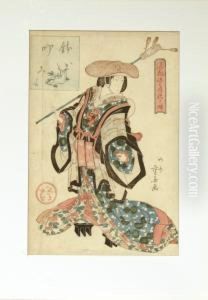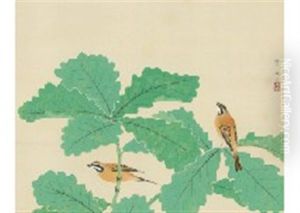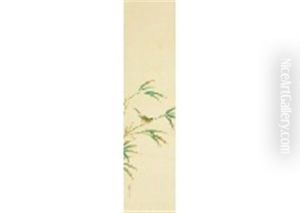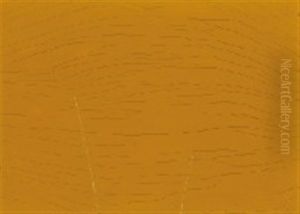Ryusai Shigeharu Paintings
Ryusai Shigeharu, born in 1802 and passing in 1853, was a distinguished Japanese ukiyo-e artist, known for his woodblock prints and illustrations that vividly capture the culture and society of the Edo period. Shigeharu originally hailed from Osaka, a bustling hub that significantly influenced his artistic development. Throughout his career, Shigeharu adeptly portrayed a wide array of subjects, from sumo wrestlers and kabuki actors to scenes of daily life and historical events, showcasing his versatility and keen observational skills.
Shigeharu's journey into the arts began under the tutelage of the renowned artist Ryukosai Jokei, who was instrumental in shaping his early style and approach. As he matured artistically, Shigeharu carved a distinct path for himself by blending traditional techniques with innovative perspectives, thus contributing to the evolution of the Osaka School of ukiyo-e. His works are celebrated for their dynamic compositions, meticulous detailing, and the ability to convey movement and emotion, capturing the essence of the subjects with remarkable clarity.
Throughout his career, Shigeharu remained deeply engaged with the cultural and artistic milieu of Osaka, reflecting the city's vibrancy and the Edo period's societal nuances through his art. His contributions to the ukiyo-e genre have left an indelible mark, making him an influential figure in Japanese art history. Despite the challenges of his time, including political and social upheavals, Shigeharu's art remained a testament to the enduring spirit and rich cultural heritage of Japan. Today, his works are preserved in various collections worldwide, offering insights into the life and times of the Edo period and the artistic legacy of Ryusai Shigeharu.



